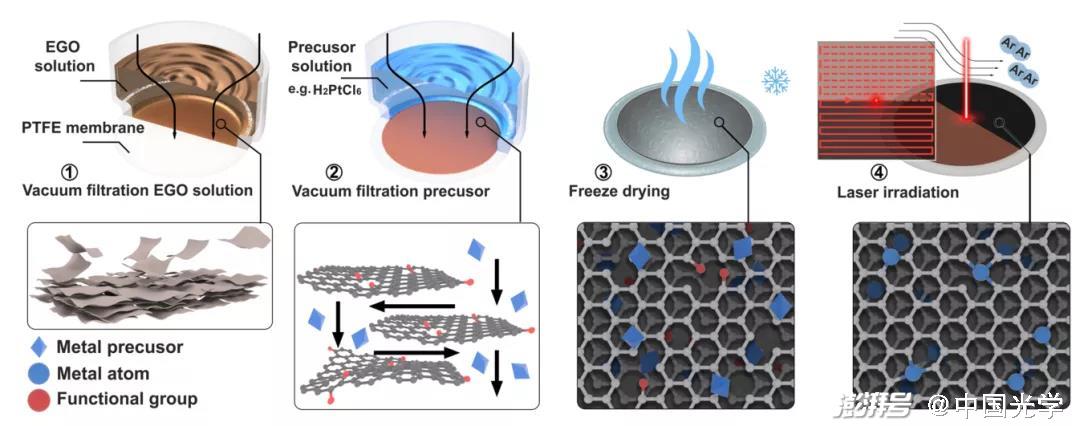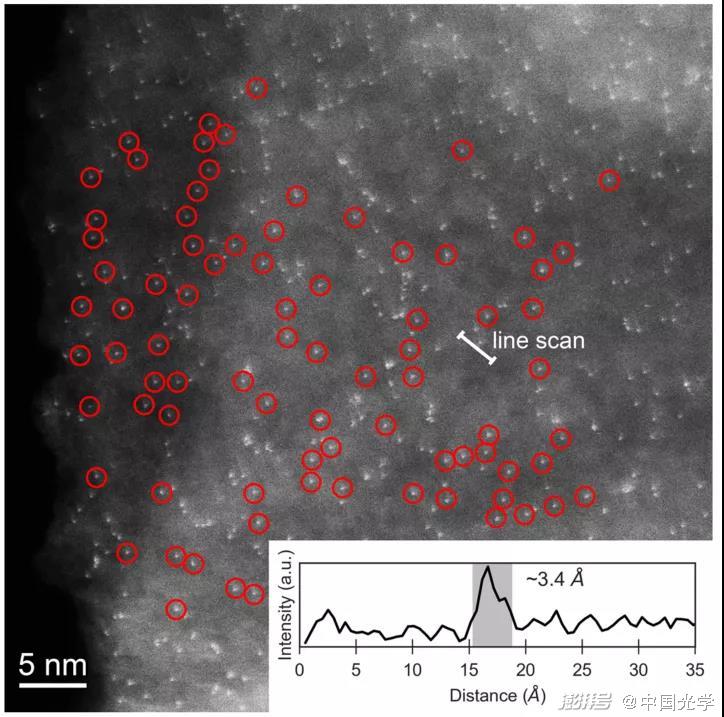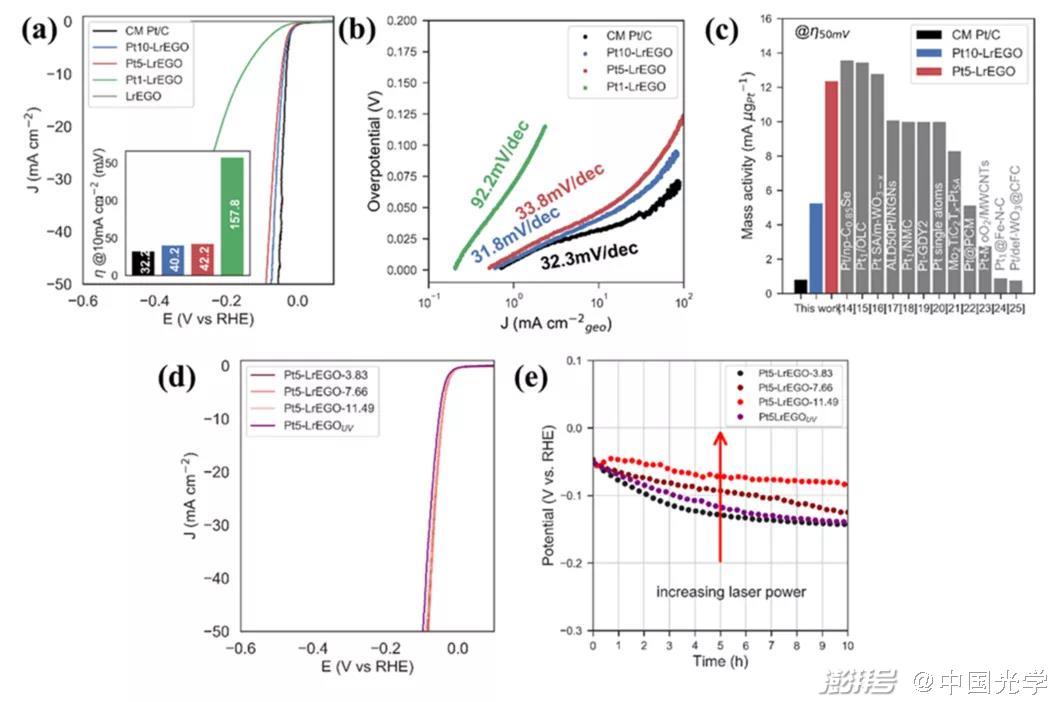Written by | Liu Zhu (University of Manchester, UK)
Description | This article is contributed by the author (research group).
laserIt has always been considered as a very powerful tool for preparing nanoparticles, which can largely replace the traditional hydrothermal or solvothermal methods. In recent years, noble metal nanoparticles prepared by this method have played an increasingly important role in the field of catalysis because of their characteristics of no surfactant and single size.
In order to reduce the use of noble metal catalysts, more and more research has begun to improve the utilization rate of active sites of noble metal catalysts in various electrocatalytic reactions. When the size of nanoparticles is reduced to sub-nanometer or even atomic scale, almost 100% active sites can be fully utilized. However, it is very challenging to synthesize single atoms with the size less than two nanometers by laser liquid phase ablation, because it is difficult to effectively limit the nucleation and crystallization of metal atoms in liquid phase.
Previously, the research group of Professor Liu Zhu from the University of Manchester in the United Kingdom, with Yudong Peng as the main research and development member, has successfully synthesized platinum nanoparticles with a diameter of 2nm on graphene oxide carriers and achieved high-performance electrocatalytic applications. The relevant experimental results have been published in (Advanced Functional Materials, 30, 2001756, 2020)。 In order to further reduce the particle size and achieve the ultimate goal of preparing monoatomic catalysts. Recently, Professor Liu Zhu’s research group reported for the first time the study of laser solid-state synthesis of monoatomic catalysts. In this study, the metal precursor and graphene oxide were simultaneously reduced by laser one-step treatment. The prepared platinum monoatomic catalyst showed ten times higher mass activity than commercial catalyst in hydrogen evolution reaction.
This article uses Laser solid-phase synthesis of single-atom catalysts Published for the title in Light: Science & Applications. The first author of this article is Peng Yudong and the correspondent Liu Zhu.
In this study, they first obtained the graphene oxide film with chloroplatinic acid precursor salt dispersed evenly on the graphene oxide sheet by suction filtration and freeze-drying, and then realized the simultaneous reduction of graphene oxide and chloroplatinic acid by laser irradiation in one step.

Fig. 1 Process diagram of synthesizing graphene supported monoatomic catalyst by laser irradiation.
In order to realize the synthesis of monoatomic catalysts, researchers have studied several influencing factors in the process. Graphene oxide has excellent hydrophilicity, which can make the metal precursor penetrate through the graphene sheet in the process of suction filtration and realize full wetting. The selection of metal precursors is also very important for the synthesis of monoatomic catalysts. In this work, researchers used HP TCL and PtCl? to pretreat graphene oxide respectively. The experimental results show that HP TCL can realize the uniform distribution of precursors on graphene oxide, while PtCl? is easy to aggregate on the carrier. The experimental results show that the electronegativity of metal precursors or their hydrolysates has an important influence on their binding on graphene oxide.
Subsequently, in order to limit the local concentration increase of metal precursors during drying, researchers used freeze-drying to dry graphene oxide pretreated by metal salts.
In order to verify the actual performance of laser irradiation for the synthesis of monoatomic catalysts, the researchers of this research group used 1064 nm nanosecond pulse laser and 355 nm picosecond pulse laser to irradiate the pretreated graphene oxide films at different energy densities.
For the traditional thermal cracking metal precursors and thermal reduction graphene oxide, the reduced metal precursors are easy to migrate and agglomerate on the carrier materials because of the slow process of heating and cooling. However, the high-speed movement of nanosecond and picosecond laser sources can achieve ultra-fast temperature rise and drop and significant photothermal effect. Under this technical characteristic, the movement of reduced metal atoms on the carrier is effectively restricted, and the reduction and graphitization of graphene thin films are effectively realized by laser with 1064nm wavelength. However, the 355nm wavelength laser is difficult to ensure the uniform reduction of graphene oxide films because of its shallow treatment depth and low stripping threshold for carbon materials.

Fig. 2 HAADF-STEM transmission electron microscope image shows isolated platinum atoms dispersed on graphene.
The prepared catalyst showed a low overpotential of 42.3mV when the current density was 10 mAcm in the hydrogen precipitation reaction, and its mass activity was ten times higher than that of the commercial platinum-carbon catalyst.

Fig. 3 The hydrogen evolution catalytic performance of laser synthesized platinum monoatomic catalyst and its comparison with commercial platinum carbon catalyst and similar platinum monoatomic catalyst produced by other methods reported in the literature.
Liu Jiaoshou said that in the process of combating climate change and achieving global carbon neutrality, catalysts are very critical and will play an irreplaceable role in some energy conversion and carbon neutrality reactions. In the field of laser synthesis of new materials, people have been trying to break the size limit of synthetic materials. The fast and universal laser solid-state synthesis method proposed by us at present has created a new record of laser preparation of monoatomic catalysts. It is hoped that this study will provide new ideas for the preparation of monoatomic catalysts and lay some foundations for the realization of roll-to-roll industrialization technologies. We will continue to explore more possibilities of laser technology in the preparation and application of monoatomic catalysts.
Paper information:
Peng, Y., Cao, J., Sha, Y. et al. Laser solid-phase synthesis of single-atom catalysts. Light Sci Appl 10, 168 (2021).
Paper address:
https://doi.org/10.1038/s41377-021-00603-9